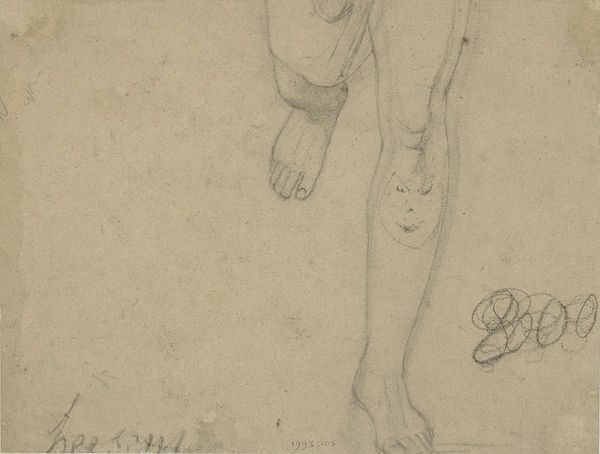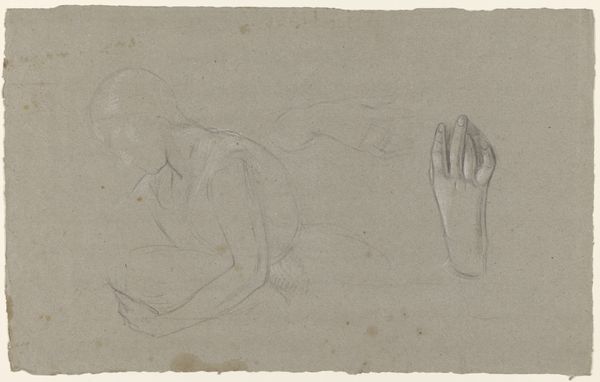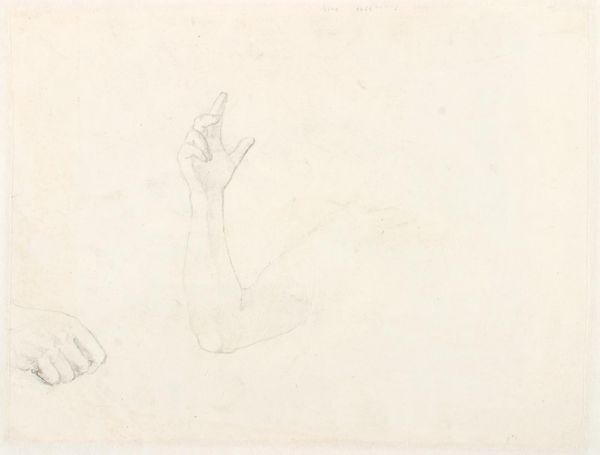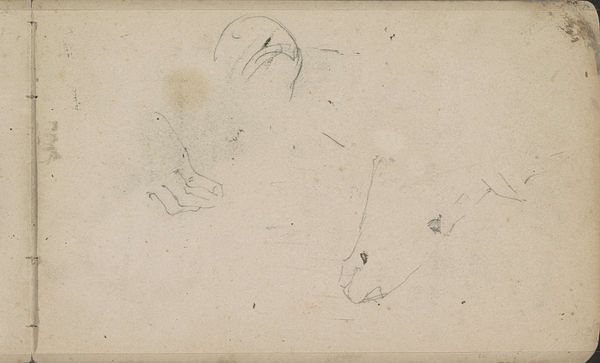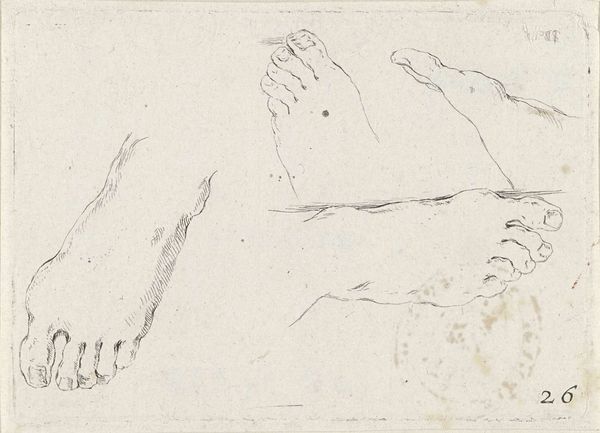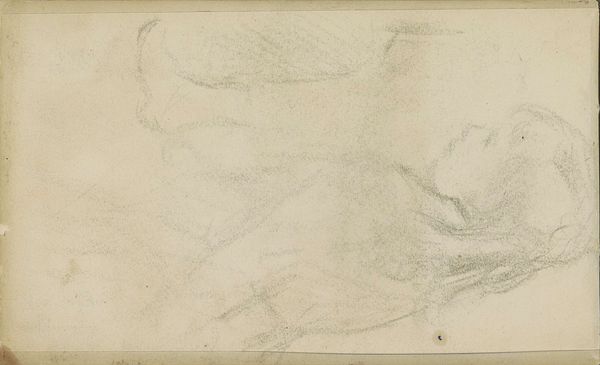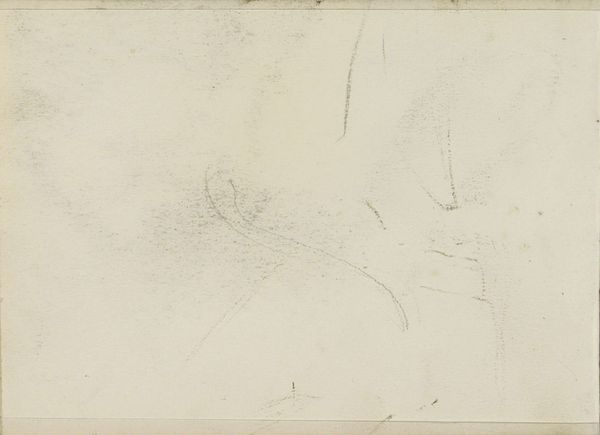![Studies of Feet [verso] by Edgar Degas](/_next/image?url=https%3A%2F%2Fd2w8kbdekdi1gv.cloudfront.net%2FeyJidWNrZXQiOiAiYXJ0ZXJhLWltYWdlcy1idWNrZXQiLCAia2V5IjogImFydHdvcmtzLzc0ZWUxOWM4LTUxMWUtNDg4Ny05Mzc3LTkzYTQxMTMxODkxOC83NGVlMTljOC01MTFlLTQ4ODctOTM3Ny05M2E0MTEzMTg5MThfZnVsbC5qcGciLCAiZWRpdHMiOiB7InJlc2l6ZSI6IHsid2lkdGgiOiAxOTIwLCAiaGVpZ2h0IjogMTkyMCwgImZpdCI6ICJpbnNpZGUifX19&w=3840&q=75)
Dimensions: overall: 30.5 x 23.7 cm (12 x 9 5/16 in.)
Copyright: National Gallery of Art: CC0 1.0
Curator: What a subtle yet compelling drawing! We’re looking at "Studies of Feet [verso]," a pencil drawing on paper completed around 1855 by Edgar Degas. Editor: Subtlety is right. The stark contrast of the delicate pencil lines against the blank paper lends a rather ghostly presence to these feet. A liminal quality, wouldn't you agree? Curator: Absolutely. These studies are part of Degas’s broader exploration of the human form. It's interesting to think about his focus, particularly given his later depictions of ballet dancers. We might consider how the foot, often overlooked, carries so much significance. The drawing asks: How can we rethink the place, function and even burden of this foundational body part? Editor: Precisely. See how the formal execution emphasizes pure shape? Notice the attention to the bone structure, the articulation of tendons, the soft padding of the heel. Degas reduces the human foot to an abstract study of volume and texture, demanding we appreciate its aesthetic merit separate from its role. Curator: He does challenge our typical perspective! It’s impossible to ignore that feet, especially bare feet, have complex associations with labour, poverty, and even shame. Degas, knowingly or unknowingly, intersects with those narratives by forcing a new level of intimacy between the viewer and the most commonly disregarded area of the human form. Editor: Perhaps. Still, Degas presents these feet without contextual grounding, detaching them from their sociopolitical narratives and encouraging purely formal engagement. Think about his composition; he intentionally gives each foot equal emphasis within the visual hierarchy, balancing their tonal values. This gives them equivalence and highlights the interplay of forms, lines, and shadows in his mark-making. Curator: It seems even the artist himself might not be fully decided. We see both an engagement with, and detachment from, the body's inherent positionality in society. Regardless of whether those bare feet evoke connotations of oppression or just an artistic study, they make us wonder. Editor: Exactly. And now I see that Degas is much more playful and exploratory than he is committed to communicating some political or emotional message through his artwork.
Comments
No comments
Be the first to comment and join the conversation on the ultimate creative platform.
